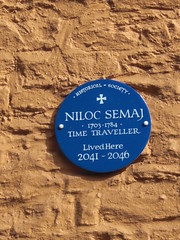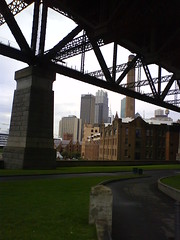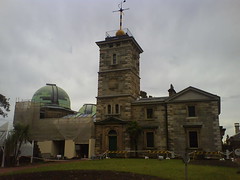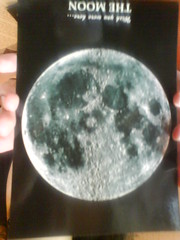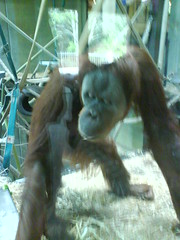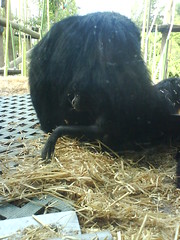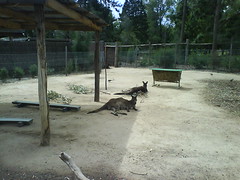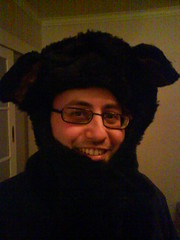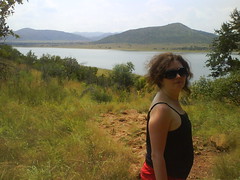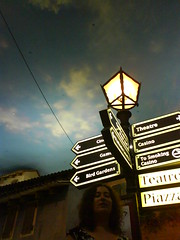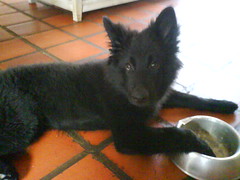In The Inheritors, a small group of primitive people face what Iain Banks referred to as an "outside context problem", a threat so far beyond the limits of their understanding that they don't stand a chance. In this case, we recognise - as the primitive people do not - that the strange "other" people who have settled nearby possess weapons and transport, and the intent to kill. As the book goes on, we realise that the people whose perspective we share are Neanderthals; the cruel, drunk and good-at-killing "others" are humans, the inheritors of the world.
It's a strange, heady book that builds on stuff in The Lord of the Flies: the idea of humans as essentially violent and primal; a reversal at the end where we see everything from someone else's perspective that changes our sense of what we have witnessed. The Lord of the Flies is a staple of the secondary school curriculum - I studied it for GCSE - but The Inheritors is a harder read, the action not always clear, and there's plenty of nakedness and sex.
Golding seems to root modern gender politics in the ancient past. His Neanderthals have clearly designated roles:
"A man for pictures [ie thinking]. A woman for Oa [ie having children.] (p. 117)
Except, as we see, the truth is more complicated and the male who says this often gives way to more gifted, able women who see pictures more clearly. Golding's not exactly a feminist here - he rarely gets through a page without mentioning breasts, though the Neanderthals would surely be used to seeing each other naked. The women might have better ideas and understanding, but its all told from the perspective of (heterosexual) men.
I think there's something similar with racial or colonial politics. The Neanderthals and the humans are distinct groups, physically and culturally, and there's a sense of innate separateness - or apartheid. And yet there's a scene in which Liku can speak the same language as the humans, and begin to form a bond, while the humans effectively adopt one of the Neanderthals as their own. The suggestion is that whatever inequalities exist, it wasn't always thus and there is still a chance to change. (We now know, of course, that Neanderthals and modern humans interbred, that many people alive today have a direct genetic inheritance from Homo neanderthalis; my understanding is that this wasn't understood at the time Golding wrote this.)
So, what about Doctor Who? The first ever Doctor Who serial is a four-part story generally known as An Unearthly Child (the title of its first episode) but also as 100,000 BC or The Tribe of Gum (titles used by the production team for the serial as a whole).
When he began working on Doctor Who, writer Anthony Coburn was on the full-time staff of the BBC's Script Department, where his job included looking for books to adapt for the screen. Golding had been lauded since the publication of Lord of the Flies in 1954, and the BBC had adapted that and several other of his novels for radio. Surely then, Coburn at least knew of The Inheritors. But there's some suggestion that he drew on it directly.
In 2003, Alan Barnes listed for Doctor Who Magazine some of the connections between that first Doctor Who serial and what he referred to as "the most renowned prehistoric novel at the time", singling out the sense in the novel that Golding's Neanderthals do not "make" fire from scratch but carry burning embers with them (each fire inherited from the last).
"Clearly, the secret of fire-making has been lost, and so the fire must be transported as a constant. Likewise, in The Cave of Skulls, Hur tips ash ("the dead fire") over Za's kindling. Both Golding's and Coburn's Neanderthals have something like a religion - the first devoted to "Oa", a kind of "Earth-Mother", the other to "Orb", a sun-god. But perhaps the best reason for believing that Coburn was acquainted with The Inheritors lies in the similarities between Golding's Neanderthal names and Coburn's: the names of 'Ha', the leader, and the woman 'Fa', are echoed by Coburn's 'Za', for instance, with the male names 'Lok' and 'Mal' resembling ancestors of 'Kal'."(Alan Barnes, "Fact of Fiction: 100,000 BC", DWM #337 (2003))
I think there are more direct links than that. Both feature an unnamed "old woman" where all other speaking characters have names. In Doctor Who, she's credited as "Old Mother", but in the dialogue is only ever "Old Woman" - capitalised in the script. Both these old women mutter from the sidelines about what the leader ought to do.
"'Mal! Mal! We have meat!'
Mal opened his eyes and got himself on one elbow. He looked across the fire at the swinging stomach [of a doe they had scavenged] and panted a grin at Lok. Then he turned to the old woman. She smiled at him and began to beat the free hand on her thigh.
'That is good, Mal. That is strength.'" (p. 58)
Both old women are murdered at key dramatic moments. When the novel's old woman dies, we discover she is the mother of one of the other characters; the Doctor Who story never tells us who Old Mother is the mother of, but that seems to have been part of an early draft.
Then there is the way these primitive people understand the world around them - and describe their own understanding. Throughout The Inheritors, the Neanderthals speak of the "pictures" in their minds that they endeavour to share with one another. Compare that to the following from Doctor Who's third episode (the red bits as per the camera script but not the broadcast version):
KAL: My eyes tell me what has happened... as they do when I sleep and I see things. Za and Hur came here to free them, and find out the a way to make fire. The old woman saw them and Za killed old woman. Za has gone with them... taking them to their tree [ie the TARDIS]. Za is taking away fire.HORG: The old woman is dead. It must have been as your eyes said it was. (Doctor Who episode 3: The Forest of Fear]
There's something, too, in the way control of some "technology" (in the broadest sense) defines who has power - weapons and boats in the book, but also clearer thinking; fire in Doctor Who. As Alan suggests in DWM, the second Doctor Who story then builds on that idea - the Daleks threatening to obliterate all other life on their planet with a neutron bomb. I wonder if something of that second story was also inspired by The Inheritors, or at least the review by Arthur Koestler in the Sunday Times of 25 December 1955, which was then quoted on later editions:
"An earthquake in the petrified forests of the English novel."
As I said in response to the Backlisted episode, The Inheritors surely influenced the 1970 story Doctor Who and the Silurians - in which a prehistoric people wake up to discover "their" Earth has been conquered by humans - and then the novelisation of that story, which begins with a chapter all told from a Silurian's point of view. There are other Doctor Who stories too, directly or indirectly. But then, if The Inheritors influenced the very first Doctor Who story, all of Doctor Who draws a line back to that book.
Backlisted suggested Golding's influence on Russell Hoban's Riddley Walker (1980), which I want to reread soon. But I now wonder if the racial aspects especially of The Inheritors fed into Nigel Kneale's Quatermass and the Pit (TV version broadcast 1958-59), and into Pierre Boulle's novel La Planète des Singes (1963) - the source of the Planet of the Apes film series. There's the "Dawn of Man" sequence that opens 2001: A Space Odyssey (1968), with two groups of primate clashing, one inspired to use weapons. I can see the interest in humanity's primitive urges, and also the reversals of perspective, in the work of Iain Banks - the "outside context problem" referenced above is a feature of Banks's Excession (1996).
There's more, I'm sure - all inheritors.





 We'd
We'd  Instead we put on another
Instead we put on another  Today, I was
Today, I was  But perhaps our most exciting news is that we have a bath. It's been five weeks since
But perhaps our most exciting news is that we have a bath. It's been five weeks since 
